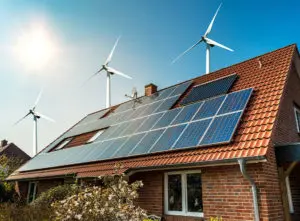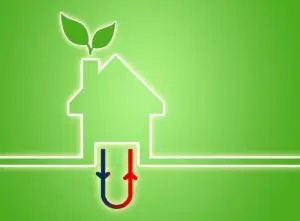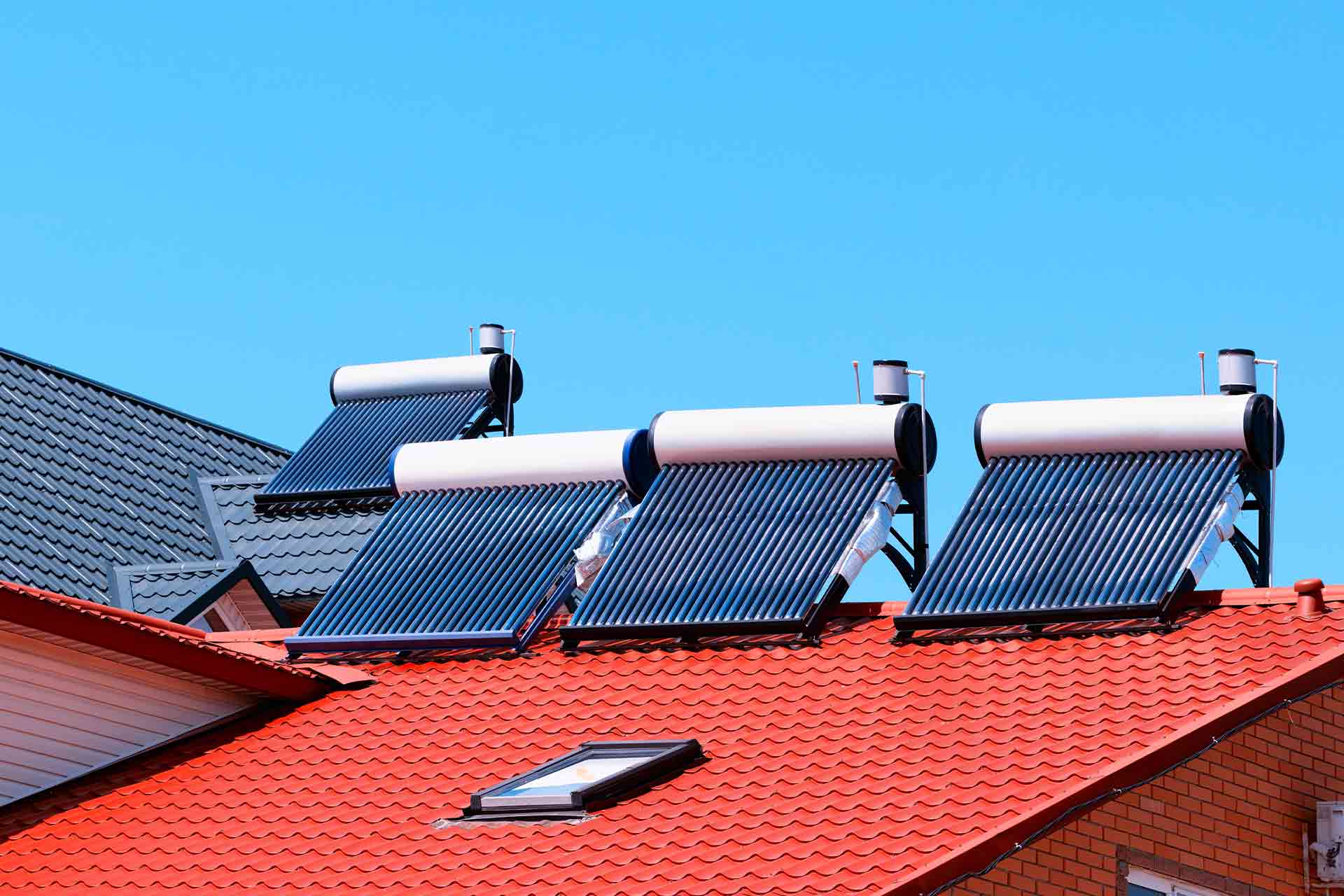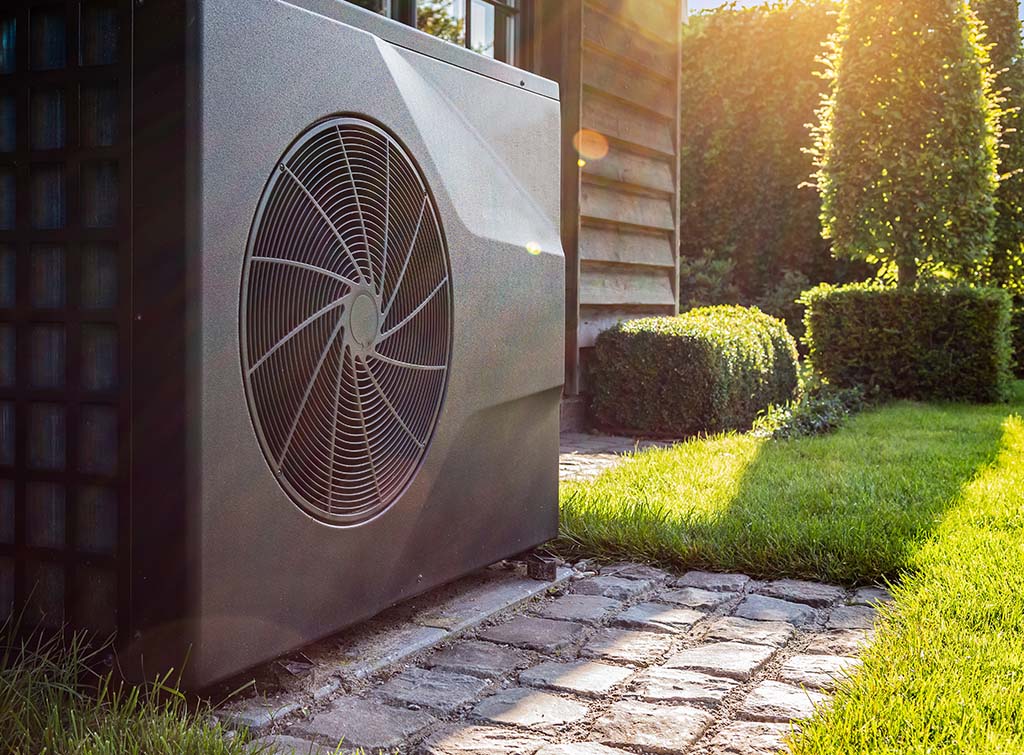Blog>Expert Advice>Renewable heating – All you need to know
Last updated: 4 October 2022
Renewable heating – All you need to know
In recent years, renewable heating has become increasingly popular for homes throughout the UK as homeowners become more conscious about their environmental impact. In this guide, we look at the various types of renewable heating systems to help you create a more eco-friendly home.

In recent years, renewable heating has become increasingly popular for homes throughout the UK as homeowners become more conscious about their environmental impact. In this guide, we look at the various types of renewable heating systems to help you create a more eco-friendly home.
Heating is one of the biggest household contributors to carbon dioxide emissions in the UK, so it’s no wonder that folks are realising that now might be the time to make changes. There are a number of heating options available, and there’s even the Renewable Heat Incentive (RHI) to encourage greener homes. Keep reading to find out more.
What is renewable heating?
Put simply, renewable heating refers to any heating system that uses energy from sources that naturally replenish to provide a continuous and sustainable supply of energy. Renewable heat sources include the sun, wind, or water.
The main purpose of using renewable energy for our heating systems is to reduce our use of and dependence on fossil fuels like gas, which are both limited in quantity and damaging to the environment. By opting for renewable heating you’re reducing your carbon footprint and contributing to a more sustainable way of life.
See the tradespeople we've checked and recommend for your job
What is the Renewable Heat Incentive (RHI)?
To help homes throughout the UK become more eco-friendly, the government introduced the Renewable Heat Incentive. The RHI offers a financial incentive to homeowners that make the switch to renewable heating systems as a subsidy for generating low carbon heat.
The cashback subsidies are tax-free and are paid out quarterly for the first seven years from when the renewable heating system is installed. The scheme has been running since April 2014 and has paid out to thousands of homes that have installed renewable heating.

The renewable heating systems that are eligible for the RHI subsidies are:
Solar-power heating systems
Ground source heat pump systems
Air source heat pump systems
Biomass heating systems
Renewable Heat Incentive rates
As it stands, the Renewable Heat incentive rates are a cashback subsidy of around 20.87 pence per kilowatt-hour used. The exact rates you are eligible for will depend on the exact renewable heating system you opt for.
Renewable Heat Premium Payment
The Renewable Heat Premium Payment (RHPP) was a government-funded scheme that offered homeowners and landlords a one-off grant to help with the cost of installing renewable heating systems in their properties. The scheme closed on 31 March 2014 and has been replaced by the Domestic Renewable Heat Incentive.
Types of renewable heating systems
Here are the main heating systems that operate using renewable heat sources:
Solar water heating
As you can guess from the name, solar water heating uses the power of the sun’s heat to warm up your home. Solar panels, otherwise known as collectors, are fitted to the roof of the property and will heat up the water in a large hot water cylinder. Ideally, you need 5 square metres of space for the panels to be installed, as well as space for the hot water cylinder.
The good:
Low maintenance cost and long life
Saves you money on your energy bills
The bad:
Limited heating capacity can’t provide a solution for all your heating need
Requires an additional system in place, especially for the winter months with less sun
See the tradespeople we've checked and recommend for your job
Ground source heat pump systems
Energy generated by ground source heat pumps comes from the ground, where pipes (called ground loops) are buried to extract the heat. Alternatively, boreholes can be dug vertically into the ground where outside space may be an issue. The extracted heat is taken into a compressor, which increases the temperature for it to then be used to heat radiators, water, and underfloor heating.

The good:
Saves money over time
Has a high Renewable Heat Incentive rate
The bad:
Expensive to install and installation can be very disruptive
Needs a lot of outside space
Air source heat pump systems
Where ground source heat pumps get heat from the ground, it’s no surprise that an air source heat pump absorbs heat from the air. As such, it will need to be installed outside your home in a location with plenty of space around it and has a good flow of air around it.
The good:
Installation is quicker and easier than a ground source heat pump
They can run for up to 20 years
The bad:
Requires suitable outside space
Running costs increase during colder months
Biomass heating system
A biomass renewable heating system works by burning wood pellets, chips, or logs to generate heat. Arguably, biomass is emitting carbon dioxide into the atmosphere, however, it emits much less than burning coal or fuel. Biomass heating is considered renewable, as long as new trees are planted to replace those used for the fuel.
The good:
Very efficient at heating, often comparable to a gas boiler
Cost-effective and subject to stable prices for fuel (compared to fossil fuels)
The bad:
Needs space for the wood burner/boiler, as well as space to store the fuel
Requires a flue that meets regulations for wood-burning appliances
See the tradespeople we've checked and recommend for your job
Renewable heating costs
To help you plan a budget and find out more about the costs of installing renewable heating systems, we’ve put together the following guides that you might find useful:
Want to know more?
If you’re interested in moving over to a more eco-friendly renewable heating system for your home, we recommend speaking to your local renewable heating experts to find out more about the options available to you.
And when you’re ready to get quotes for renewable heating, we always recommend obtaining at least three quotes from our trusted tradespeople. Our request a quote feature is perfect for getting quotes – you post details about the job you want doing and we’ll send it out to local tradespeople in your area. Try it out – it's quick and easy!
FAQs
Why is energy from the heat of the earth renewable?
When the earth was formed, it retained a huge amount of heat energy in its core that far outweighs the heat being used on the surface. It’s also possible that the volume of heat energy taken out can be reabsorbed, making it a sustainable energy source. Therefore any energy generated from the heat of the earth is classified as renewable.
More Expert Advice Articles
See the tradespeople we've checked and recommend for your job





